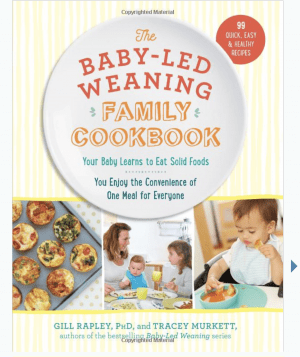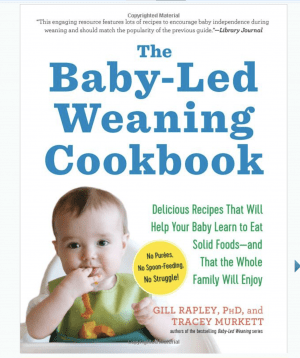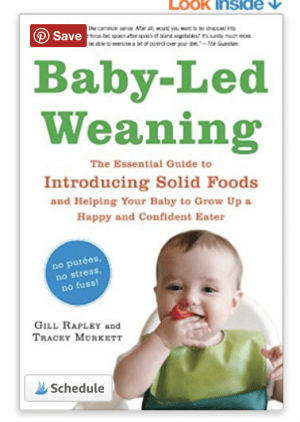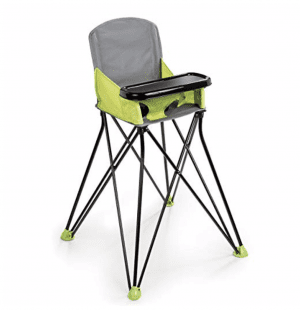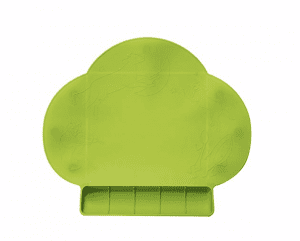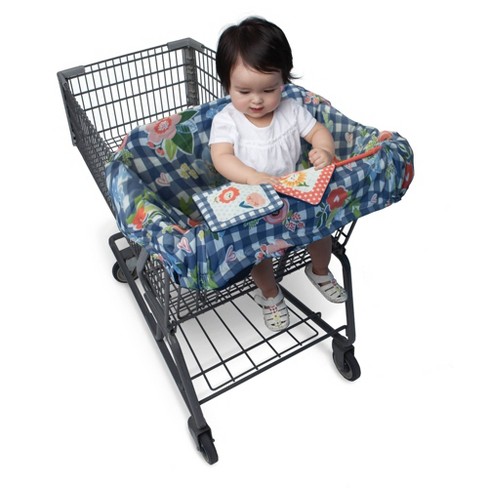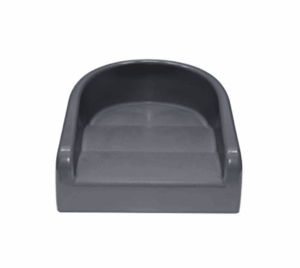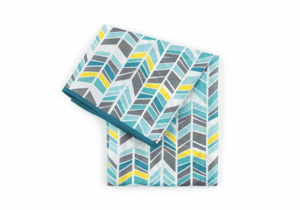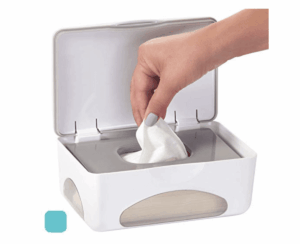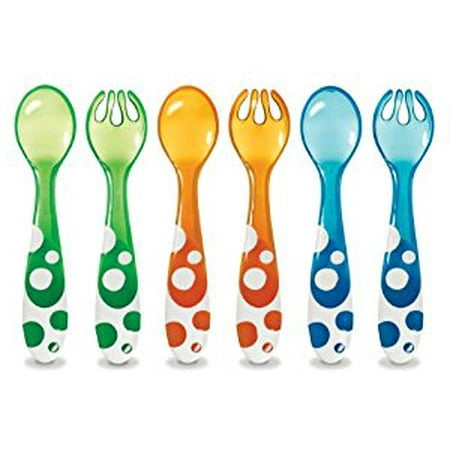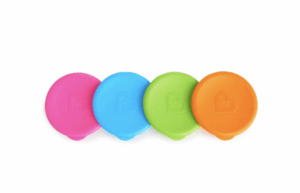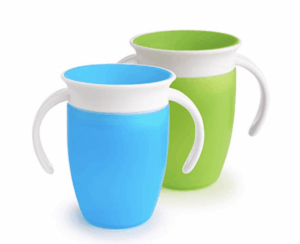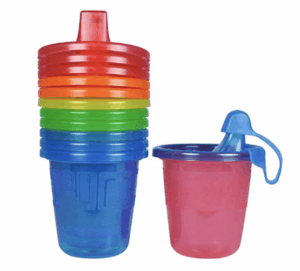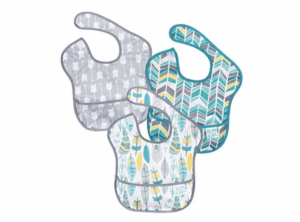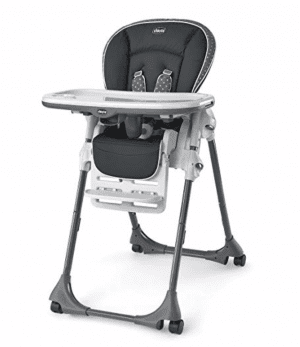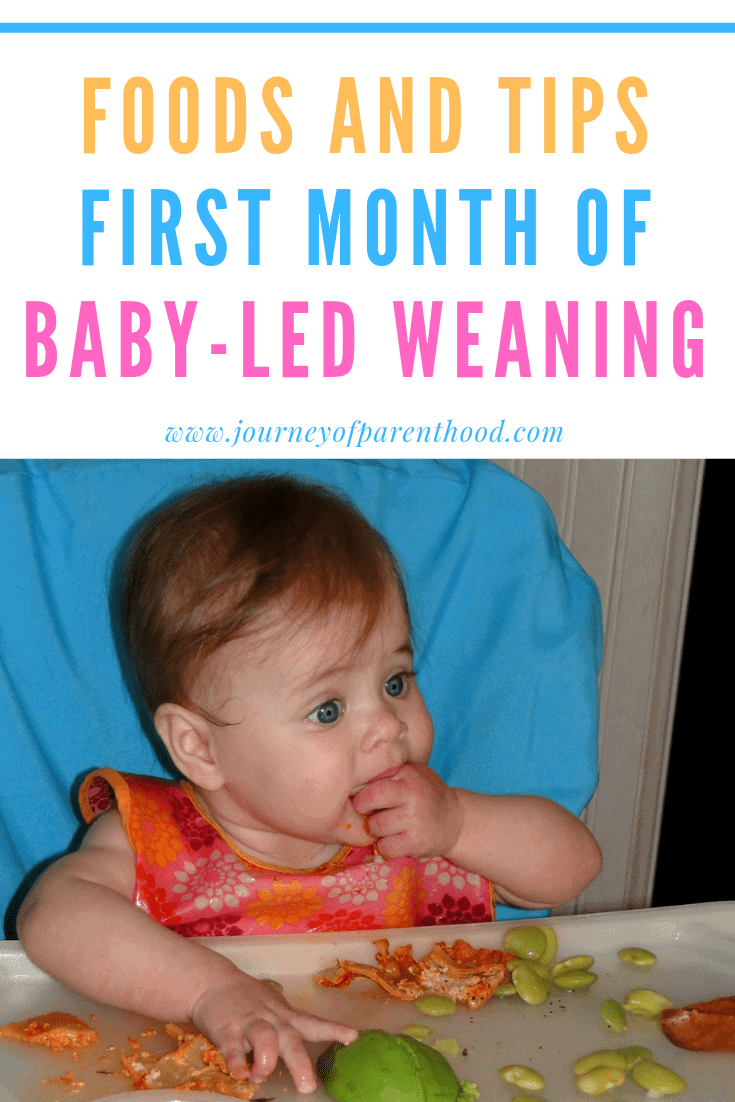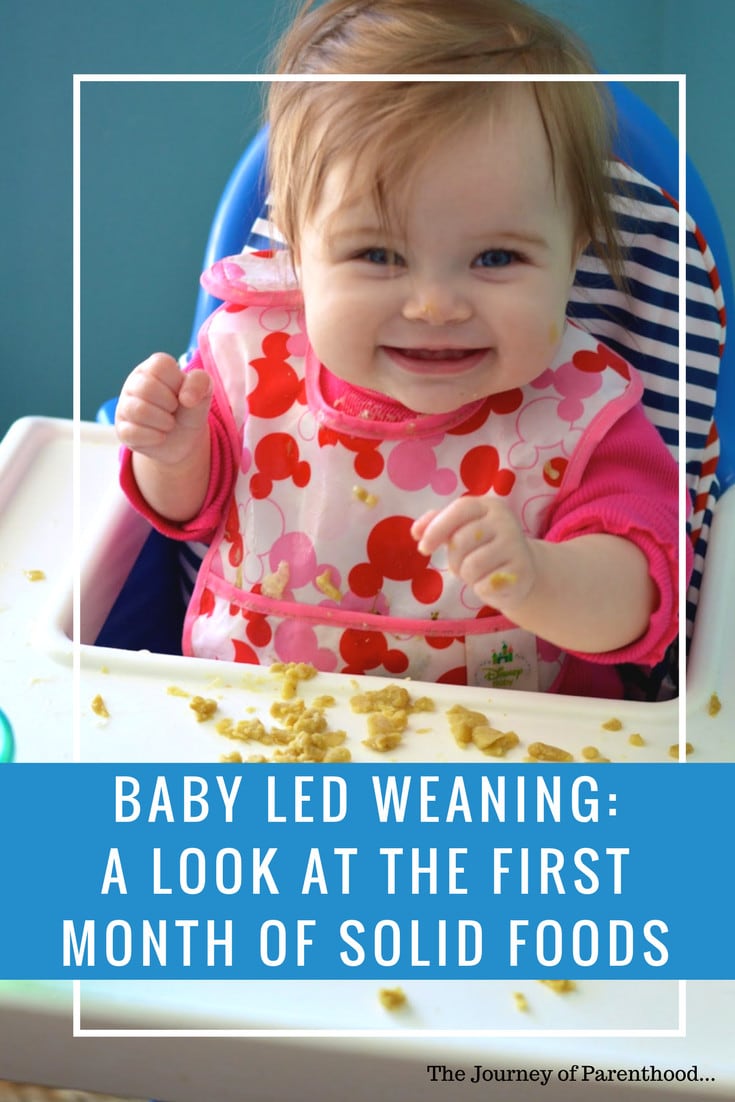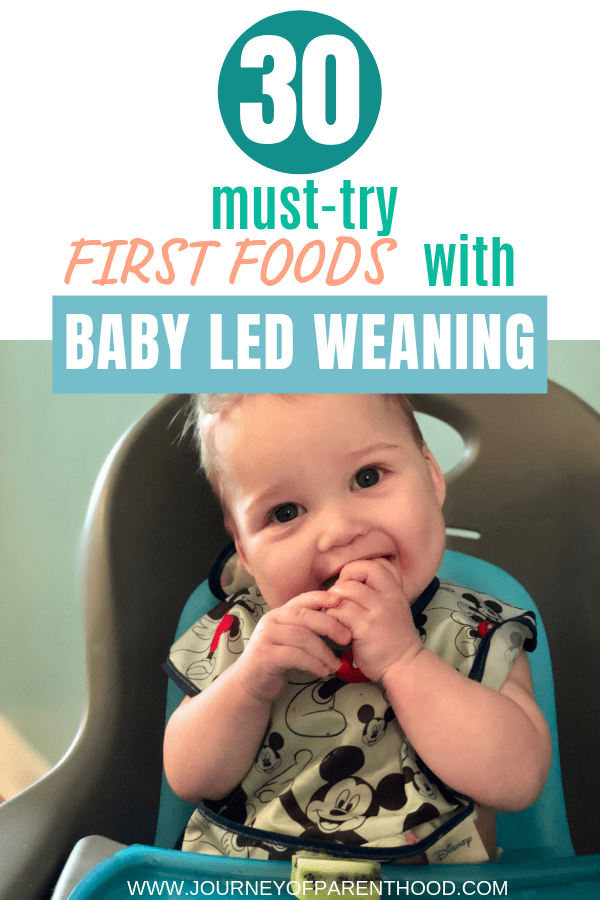Baby Led Weaning and Choking vs Gagging: What to Know.
I have used baby-led weaning for introducing solids to three out of four of my children, and even with the first born I transitioned out of pureed food pretty quickly!
I LOVE BLW and am always recommending it to everyone I know with an infant!
The most common concern among new mamas? “Will my baby choke using baby led weaning?”
The most common comment among the grandmother generation: “I’m just terrified the baby is going to choke!”
Even my husband gets really nervous about our infants choking when starting solids with baby led weaning.
So today I’m on a mission to put everyone’s minds at ease on this topic!
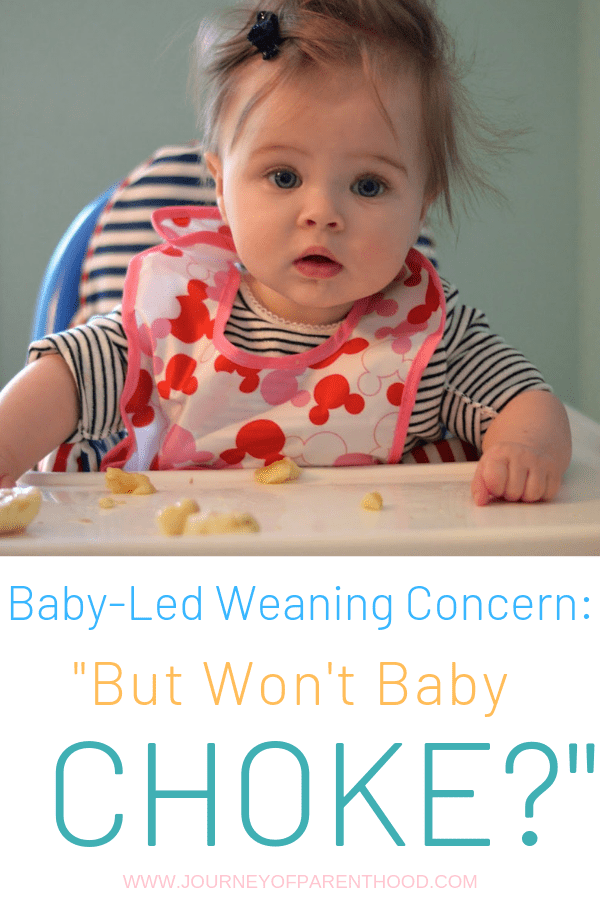
Basic Overview of Baby-Led Weaning
If this is your first time ever hearing about baby led weaning then you might be a tad confused.
There are many varieties of feeding practices when it comes to infant feeding methods for eating solids during the first year of life.
Baby-led weaning is simply a way of introducing solid foods to your baby that does not involve purees, baby food, or spoon-feeding.
A baby at age six months or older truly feeds themselves and the parent is able to offer a wide variety of foods and flavors by offering baby the same foods that the rest of the family is eating!
—–> I highly recommend reading this simple guide for getting started with baby-led weaning.
I also Recommend Purchasing These Books to Get Started:
Even though there are much fewer supplies needed for BLW than for spoon-feeding, there is still some super helpful feeding gear you’ll want to have!
—–> Read this post for details on all my must-have BLW recommendations!
You Can Shop all the Best BLW Items Here:
Does Baby Led Weaning Cause Choking?
To put it simply. No. Baby-led weaning feeding method does not cause choking.
Can babies choke on BLW? Yes.
Can babies choke on purees? Can babies choke on teething biscuits? Can babies choke foods specifically made and designed for infants?
Yes. Yes. Yes.
It’s not that a parent using BLW shouldn’t worry at all about choking, it’s still something to be mindful of and aware about, but it’s helpful to keep in mind that a baby isn’t any more likely to choke with self-feeding than they are with traditional spoon feeding or any other feeding method or food type.
Or put another way – a baby choking on pureed food is just as likely to happen as a baby choking on solid foods introduced with baby-led weaning.
—–> You can read what the American Academy of Pediatrics says here regarding a study about the choking risk involved with BLW.
When a baby is sitting up-right and fully in complete control of feeding
By putting the baby in the driver’s seat of self-feeding you are allowing them to control how much they eat, how they best feel comfortable in processing the food prior to swallowing, and their comfort in the way they swallow.
—–> Be sure to read this post for 30 great first foods to offer your baby with BLW!
Having a variety of foods offered to a baby in an age-appropriate setting is a safe feeding strategy. In fact, it may even be safer than the pureed approach to solid foods!
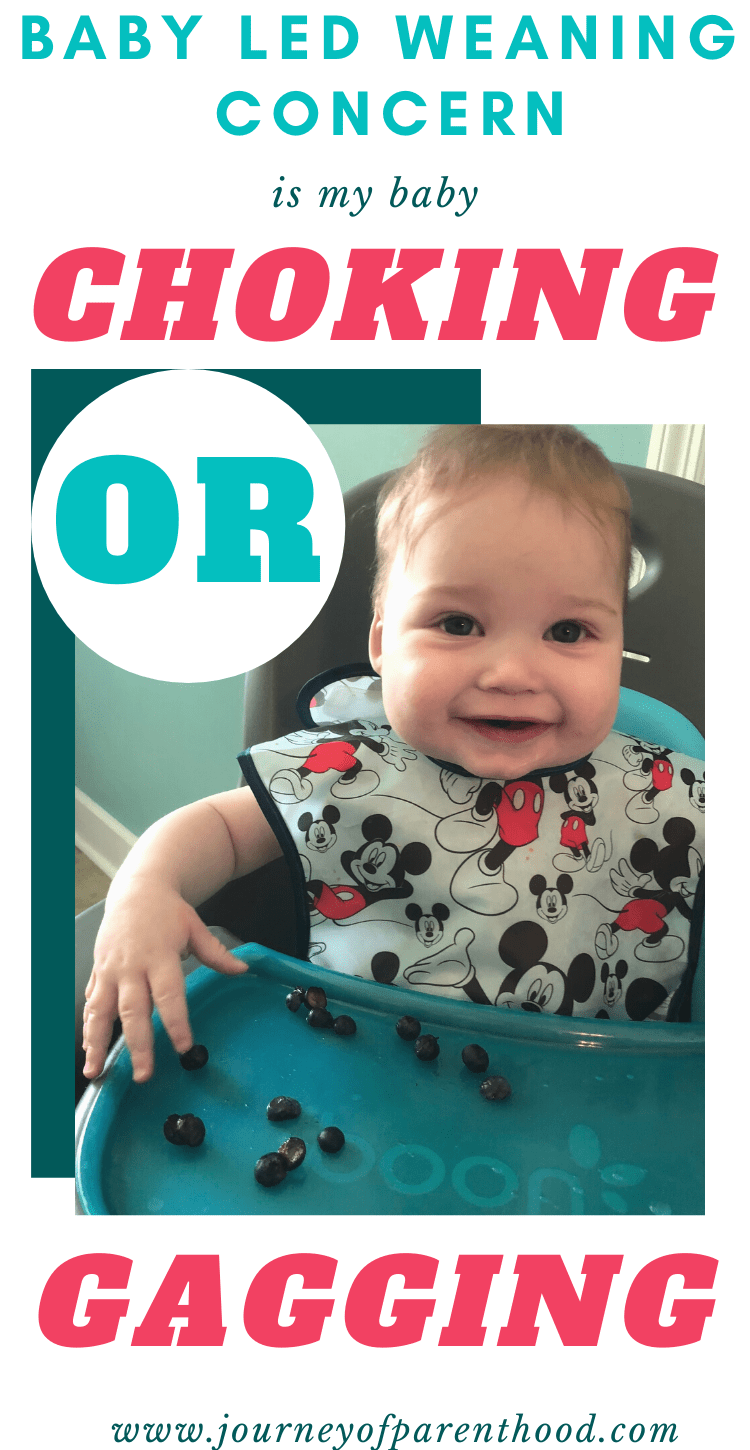
How Baby Led Weaning Prevents Choking
Not only does baby led weaning not cause a baby to choke, but it actually helps prevent a baby from choking!
As an adult, our gag reflex is located far back into our throats. So gagging on food isn’t a regular occurrence in our daily lives.
This can make it alarming to see our baby gag while eating.
However, babies have their gag response triggered much further forward on the tongue than it is for adults.
A six month old has a closer gag reflex and when started solids at this age it’s appropriate to expect some coughing and/or spitting out of foods.
This means that babies gag easily. And gagging is NOT the same thing as choking.
Choking is a partial or complete blocking of the air passage. It’s silent.
Gagging is a natural triggered response and is a way a baby actually protects themselves from choking.

Spoon Feeding and Choking
Spoon feeding is actually more likely to cause a baby to choke than baby-led weaning.
With spoon feeding the food is being forced into the mouth and often slurped off a spoon.
An example is given on page 63 of Baby-Led Weaning:
“To understand why this is, think about how you use a spoon to eat tomato soup and compare it with the way you eat your breakfast cereal. If you were to ‘slurp’ your cereal the way you do your soup, the lumps would go straight to the back of your throat and you would soon start to cough and splutter. When babies are spoon-fed they tend to suck the food in, so they gag or ‘choke’ very easily”
When spoon feeding parents may also put the food past the natural gag response trigger location on the baby’s tongue.
Over
The child hasn’t been able to learn the proper amount of food management that they can handle and will tend to eat too much at once or put the food too far back without properly chewing.
They don’t have the opportunity to learn how to avoid food blocking their airway.
By putting a baby in control of feeding themselves from the start, they naturally gain confidence in self-feeding and naturally understand how to eat in the safest ways for their bodies.
Safety and health are always a concern for a parent and baby-led weaning offers both!
There are many additional benefits that BLW provides for infants including oral motor skills, eye-hand coordination, and happy mealtime experience.
—–> You can read more about the benefits of baby led weaning here!
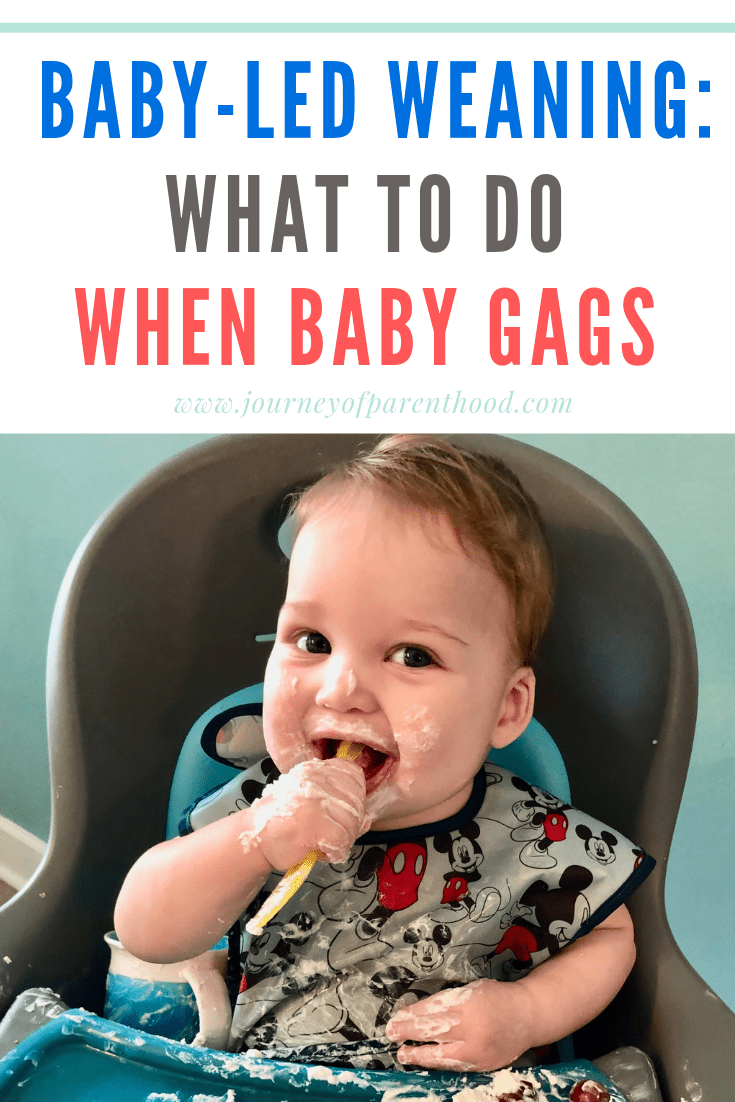
How to Prevent Choking in Baby Led Weaning
It doesn’t take much to prevent choking when using baby led weaning.
- Wait until the baby is READY to start solids before offering them (6 months old)
- Always have the baby in an upright seated position when eating.
- Always monitor your little on
e while eating – even with finger foods. - Let the baby feed themselves – do not place food in the baby’s mouth.
From page 65 of Baby-Led Weaning:
When a baby puts a piece of food into his mouth himself, he is in control of it. If he is able to chew it, he will. If he is able to get it to the back of his throat, he’ll swallow it. If he isn’t able to do these things then, as long as he is upright, the food will simply fall out. Allowing a baby to feed himself means that he is in control – and having control helps to keep him safe.
What to do When Your Baby Gags
I relate a baby gagging to teaching our babies survival swim lessons.
Survival swim teaches our children to float. To literally save themselves if they were to fall in a body of water.
If I were to always pull them quickly from the water anytime their faces went in, they wouldn’t be able to use the skills they’ve learned and practice water safety.
They would lose the skills and would no longer know how to float if a situation arose where it was necessary.
When a baby is gagging it’s important to PAUSE.
Our natural instinct as a parent is to jump in and “rescue” our baby from a “stressful” situation.
But they aren’t stressed.
If your baby is sitting upright and making gagging sounds (coughing) then they have air. They aren’t choking.
They are simply learning to use the tools their body has in order to prevent choking.
Give them the opportunity to work it out on their own.
By stepping in and trying to “help” it often only makes the situation worse.
The well-meaning parent or caregiver will typically swipe their finger in the mouth hoping to free the food and can easily, instead, cause the food to lodge further back into the throat.
This then WILL cause the child to be under stress, to not know how to use their natural ability to free the food, and can more easily result in a choking situation with a blocked air passage.
By stepping in and even possibly panicking it also signals to the child that their natural reaction is something to be fearful of.
How to Respond to Gagging with Baby-Led Weaning
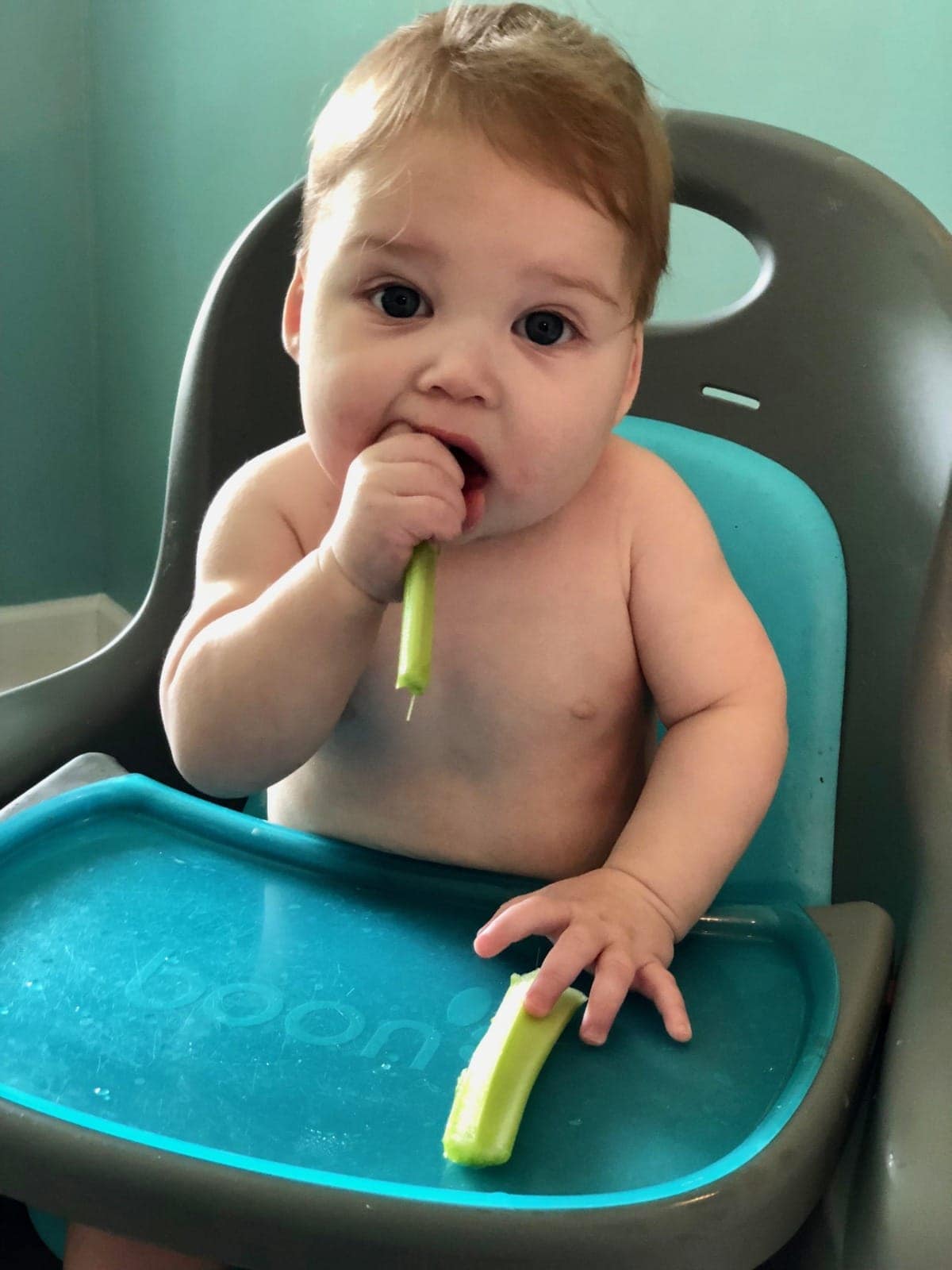
Babies gag as a natural response to help prevent choking. Baby-led weaning puts the baby in control and allows them to manage to feed themselves. Baby-led weaning does not cause choking but it is important to always keep an eye on your baby while they are eating any finger foods or other solids.
Gagging will happen and how you respond to it can make the difference in your child having a positive or negative experience. Here is how to properly respond when your baby gags during mealtime:
- Remain Calm.
- Make sure baby is sitting upright or leaning forward.
- Do not take your eyes off of your baby.
- Allow your baby to work out the food on their own. They will cough and spit it out with ease.
- If baby stops coughing or breathing then they are truly choking (have a blocked airway) and first aid measures need to be taken.
Choking is NOT more common with Baby-Led Weaning than any other traditional feeding method.
Baby Led Weaning Book

Bumkins SuperBibFeathers, Quill, Arrows

Munchkin Miracle 360 Trainer Cup
Check Price For Trainor Cup Here!

Final Thoughts
I am so thankful I discovered baby-led weaning.
It truly made mealtimes SO much more enjoyable for each of my children and for our entire family.
We have only ever had one true case of choking and it was actually my first born child who did NOT start solids by using the baby-led weaning method (he was spoon fed for several months).
My Personal Experiences with Baby Led Weaning:
- A Letter to my Son on His 16th Birthday From Mom (Kye’s Bday Letter) - March 20, 2025
- Open Letter to my Daughter on her 12th Birthday – Love, Mom {Britt’s 12th Bday Letter} - January 16, 2025
- Letter to My Son on his 6th Birthday – Love Mom - January 8, 2025





